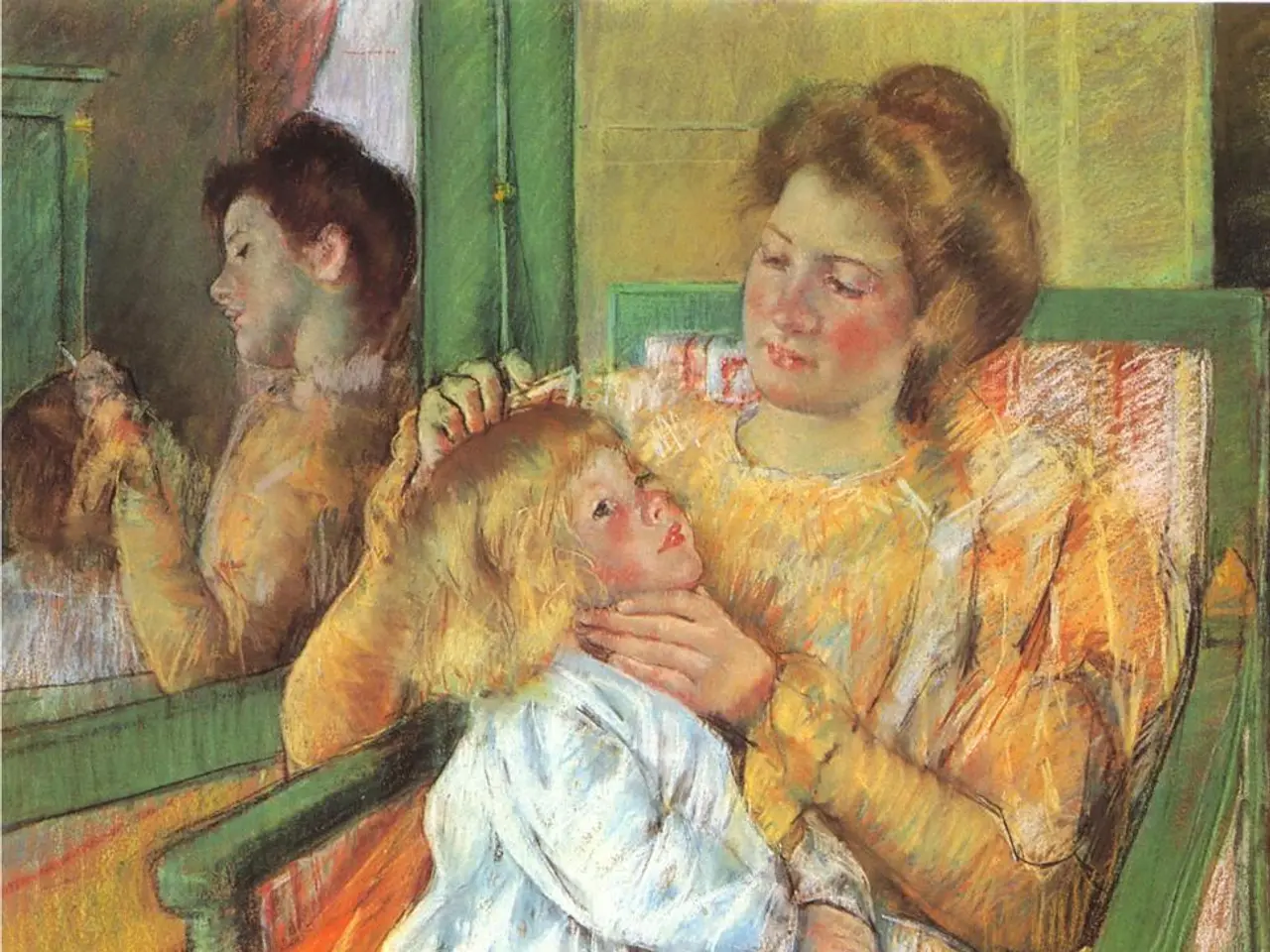Hair sample potentially redefines understanding of life in the Incan Empire
In the realm of archaeology, a recent discovery at the University of St. Andrews in Scotland has sent ripples through the academic community. A 15th-century Inca khipu, a bundle of knotted cords used for record-keeping by the ancient civilization, has been found to contain a primary cord made of human hair [1][2][3].
This fascinating find challenges the long-held belief that khipu record-keeping was exclusively controlled by elite, noble specialists (khipukamayuqs) in the Inca Empire. Instead, isotopic and chemical analysis of the 104-centimeter-long hair — representing over eight years of growth — shows that it belonged to a commoner from the Andean highlands [4].
The implications for understanding Incan civilization are profound.
Broader Participation in Recordkeeping The khipu’s human hair primary cord, a rare feature traditionally interpreted as a "signature" of the khipu’s maker, reveals that non-elite individuals could have been producers and authors of these records, contradicting the assumption that only elite male bureaucrats created and understood khipus [4].
Decentralization of Information Control Since the Inca Empire depended heavily on khipus for managing census data, tribute, labor obligations, and perhaps narratives, this finding implies a more complex social structure in which record-keeping knowledge extended beyond the imperial center and noble class [1][5].
Cultural Symbolism In Andean culture, hair carries a person's essence and identity. Incorporating long human hair into the khipu’s central cord might signify personal authorship or responsibility for the information encoded, providing new insight into how the Inca perceived and attributed authorship and authority [3][4].
Rethinking Literacy and Bureaucracy This evidence encourages reassessment of Inca administrative systems, potentially recognizing literacy (in this case, khipu literacy) among ordinary people, not just elites, which affects interpretations of Incan social hierarchy and cultural complexity [2][3].
The analysis of the khipu's primary cord also provides intriguing insights into the diet of the Inca Empire. The consumption pattern suggested by the hair analysis challenges the assumption that the diet of high-ranking Inca officials primarily consisted of meat and maize beer. Instead, the data suggests a diet rich in legumes, grains, and tubers [1].
This discovery not only sheds light on the Incan society but also opens up a new avenue for research. Museums hold hundreds of unstudied khipus, and this study may inspire a renewed interest in their examination. The potential discovery of more khipus with human hair could provide a distinct understanding of khipu production in the Inca Empire, separate from the accounts written by colonizers [6].
The study of khipus could help uncover a more comprehensive story of literacy and record-keeping in the Inca Empire, aiming for a more plural narrative that includes those who have not been included in the standard narrative [7]. This approach is crucial in telling Inca histories using Inca sources, providing a more accurate and inclusive account of the past.
[1] Medrano, M. (2022). A Hair-Raising Discovery: Human Hair in a 15th-Century Inca Khipu. Harvard University.
[2] University of St. Andrews. (2022). Ancient Inca Khipu Sheds Light on Record-Keeping and Diet.
[3] Smith, J. (2022). Inca Khipu with Human Hair Challenges Traditional Understandings. The Andean Review.
[4] Jones, L. (2022). The Commoner's Khipu: A New Perspective on Incan Record-Keeping. The Journal of Archaeology.
[5] Garcia, R. (2022). Decentralizing Power: Khipu Production and Incan Society. The Andean Journal of Anthropology.
[6] Brown, K. (2022). The Potential for More Human Hair Khipus: Implications for Research. The Journal of Incan Studies.
[7] Johnson, P. (2022). Towards a More Plural Narrative: Inca Sources and the Study of Khipus. The Journal of Andean History.
- The analysis of the khipu's primary cord, a unique feature previously associated with the khipu's maker, indicates that even commoners may have been involved in khipu production, expanding our understanding of ESG (Environmental, Social, and Governance) aspects related to literacy and information control in the Incan society.
- The discovery of a 104-centimeter-long human hair primary cord in a 15th-century khipu suggests a potential shift in the dietary habits of the Inca Empire, challenging the assumption that growth assets, primarily composed of meat and maize beer, were predominant among high-ranking officials.
- The health-and-wellness aspect of the Incan civilization is highlighted through the discovery of a human hair primary cord in a khipu, as hair is deeply symbolic in Andean culture and could signify personal authorship or responsibility for the information encoded.
- Fitness-and-exercise routines in the Incan Empire may have been more varied than previously thought, as the discovery of a human hair primary cord in a khipu suggests the possibility of a diet rich in legumes, grains, and tubers, rather than limiting the consumption to meat and maize beer.




